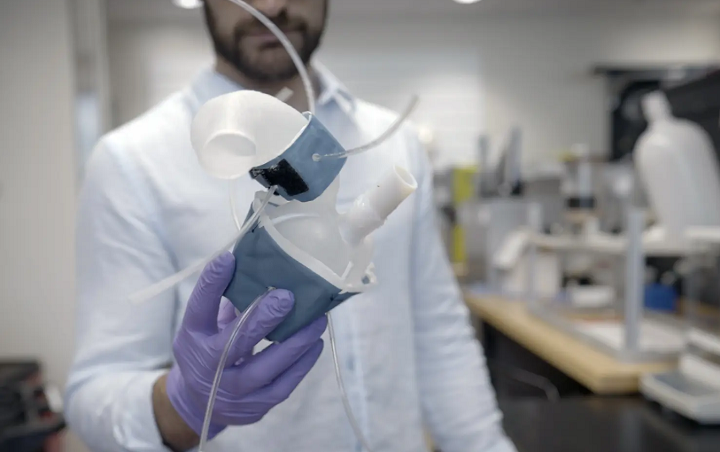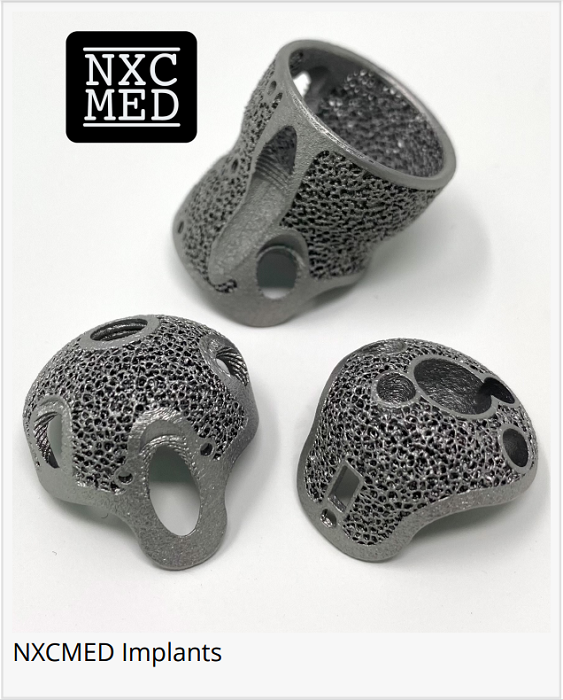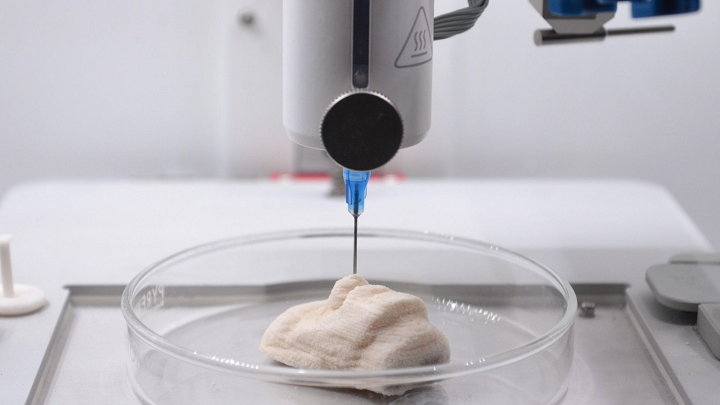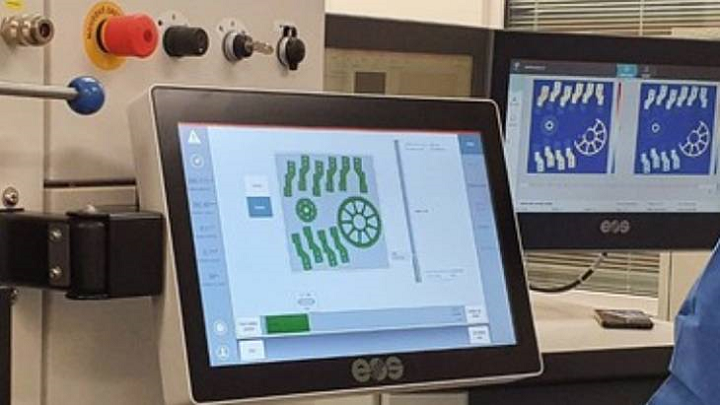We’re starting with AMUG news today in 3D Printing News Briefs, as the organization has awarded two scholarships. On to medical news, MIT engineers are 3D printing robotic heart replicas to help improve valve replacement surgery, and Next Chapter Manufacturing has expanded into the medical industry. EPFL researchers developed a way to 3D print a strong, eco-friendly ink containing bacteria. Finally, Czech energy companies ČEZ Group and Škoda JS expanded their use of 3D printing.
AMUG Announces Scholarship Recipients

Dr. Les Kalman (left) and Brent Griffith (right) have been awarded AMUG scholarships and will be participants in AMUG 2023.
Ahead of its upcoming conference, the Additive Manufacturing Users Group (AMUG) has announced the recipients of its two scholarships, which recognize educators and students who demonstrate passion and vision for AM to advance industry and education. The Randy Stevens Scholarship is awarded to one educator focusing on AM, and this year it was given to Dr. Les Kalman, Assistant Professor in restorative dentistry at Western University. He focuses on improving the clinical experience through efficiency, communication, or accuracy, which is where 3D printing comes in. He developed and instructed novel digital dentistry courses, which teach students and dentists why the technology is important in patient care, and is also involved in research he believes is “pushing and advancing the boundaries of 3D printing and additive manufacturing in dentistry.” The Guy E. Bourdeau Scholarship is awarded to one college student in AM, and this year’s recipient is Brent Griffith, P.E., who is pursuing a Master of Engineering in Additive Manufacturing and Design through Penn State University. He decided to further his AM expertise, stemming from a 3D printer kit he received for graduation, by pursuing a master’s while managing the AM program at Labconco Corporation. His research is focused on health and safety issues that result from printer emissions, and he hopes to “contribute to existing research and help develop or add to the development of standards regarding the safety of printer operations.”
“Both of our scholarship winners exemplified a passion for additive manufacturing that was triggered many years ago but has not waned. Beyond that, the committee recognized their visions of changing how things are done coupled with diligence to make the changes a reality,” said Rajeev Kulkarni, Chair of the AMUG Scholarship Committee, noting that through their mentorship efforts, the two also empower others to change the world as well.
Dr. Kalman and Griffith will attend the AMUG Conference in Chicago, and present their work on Monday, March 20th.
MIT Engineers 3D Print Robotic Heart Replicas to Improve Surgery

Engineers creating custom 3D hearts that match a patient’s original organ’s form, function and blood-pumping ability. Image: Melanie Gonick/MIT
According to MIT engineers, as many as 85,000 aortic valve replacements are performed each year in the U.S., but if patients receive the wrong size valve, it can migrate within the heart, which is very dangerous and requires another surgery to fix. The team is hoping to improve these procedures with 3D printed robotic heart replicas, which match patients’ actual organ, function, and blood-pumping ability. Their hope is that with this new 3D method, surgeons will be able to plan and practice implanting different valves into 3D printed models of their patients’ hearts ahead of time. They start by converting medical images of a patient’s heart into a 3D computer model, in order to create a flexible, soft shell that matches the shape of the patient’s heart, in addition to a 3D printed patient-specific aorta. Additionally, the engineers are able to manually match the heart model’s pumping so it mimics the limited airflow, and stress, from which heart and heart valve disease patients suffer.
“All hearts are different. There are massive variations, especially when patients are sick. The advantage of our system is that we can recreate not just the form of a patient’s heart, but also its function in both physiology and disease,” said Luca Rosalia, a graduate student in the MIT-Harvard Program in Health Sciences and Technology.
Next Chapter Manufacturing Expands Into Medical Industry
Additive tooling company Next Chapter Manufacturing (NXCMFG) has expanded into the medical industry by creating an additive surgical company, called Next Chapter Medical (NXCMED). The company, within its ISO 13485:2016 certified facility, focuses on quality of life for patients, and achieving efficient surgeries through the use of 3D printed implants and complex medical and surgical devices. Powered by manufacturing experts with proven capabilities in transformative technologies like AM, NXCMED offers a complete end-to-end solution to customers, delivering results in days through its scalable operating system, which saves on costs for surgical centers. Its tailored patient-specific implants can enable reduced risk of infection, quicker surgeries, and faster recovery, and also helps its customers optimize AM in the design phase.
Jason Murphy, owner and CEO of Next Chapter Medical, said, “NXCMED enables customers to break away from the norms and truly design surgical devices and implants without limits to benefit the patient and surgeon alike.”
EPFL Researchers Develop 3D Printable Ink Containing Bacteria
Researchers from the Swiss Federal Institute of Technology Lausanne (EPFL) developed a way to 3D print ink with Sporosarcina pasteurii bacteria, which could be valuable in a number of fields, from the arts and biomedicine to coral reefs. When exposed to a urea solution, this particular bacteria starts a mineralization process that results in calcium carbonate (CaCO3), which means the team’s lightweight yet strong, mineralized biocomposite, dubbed “BactoInk,” could potentially be used to print nearly any shape. Inks must fulfill certain flow conditions—behave like a solid while at rest, but able to be extruded through a 3D printer nozzle. Previously, microscopic mineral particles have been added to 3D printing inks to meet some of these requirements, but the final structures were often soft, or shrunk after drying, which led to loss of shape control or even cracking. As lab head Esther Amstad explained, BactoInk is versatile, eco-friendly, and possesses “excellent mechanical properties,” which welcomes new possibilities for printing load-bearing, lightweight composites with similar characteristics of natural materials.
The abstract of the team’s study reads, “Nature fabricates organic/inorganic composites under benign conditions, yet, in many cases, their mechanical properties exceed those of the individual building components it is made from. The secret behind the evolutionary pivot is the unique ability of nature to control structure and local composition of its materials. This tight control is often achieved through compartmentalization of the reagents that can be locally released. Inspired by nature, we introduce an energy-efficient process that takes advantage of the compartmentalization to fabricate porous CaCO3-based composites exclusively comprised of nature-derived materials whose compressive strength is similar to that of trabecular bones. The unique combination of nature-derived materials, 3D printability, and good mechanical properties is achieved through the formulation of these materials: We combine microgel-based granular inks that inherently can be 3D printed with the innate potential of engineered living materials to fabricate bacteria-induced biomineral composites. The resulting biomineral composites possess a porous trabecular structure that comprises up to 93 wt% CaCO3 and thereby can withstand pressures up to 3.5 MPa. We envisage this system to have the potential to be used in art restoration, serve as artificial corals to help the regeneration of marine reefs, and, with additional work, might even allow the reparation of broken or partially disintegrated natural mineral-based materials such as certain parts of bones.”
ČEZ and Škoda JS Expand 3D Printing Usage
Finally, Czech energy companies ČEZ Group and Škoda JS announced that they have expanded their use of 3D printing. The Czech Republic uses nuclear power for 34% of its electricity, which is generated from four reactors at Dukovany and two more at Temelín, but disruption to supply chains due to the war in Ukraine and the COVID-19 pandemic caused issues for the industry. This led ČEZ to figure out a way to replace defective components with new parts, instead of waiting for standard production, and the firm now uses both plastic and metal 3D printing mostly for non-nuclear parts. At its Pilsen plant, Škoda JS uses 3D printers to produce large metal parts, and prints smaller parts at its other Czech nuclear power plants. The two companies confirm that they 3D printed a total of 4,159 plastic and metal parts over the last year, which not only helps avoid supply chain delays, but also boosts energy independence and decreases downtime, “without affecting the safe supply of electricity.”
“It is another of the steps … to the strengthening of our independence in the supply of spare parts and the planned operation of the nuclear units for at least 60 years,” Bohdan Zronek, ČEZ board member and director of the nuclear energy division, said about using 3D printing. “Thanks to 3D technology we can produce new, completely identical components, which is important in the event that the supplier no longer exists or does not produce the part.”
Subscribe to Our Email Newsletter
Stay up-to-date on all the latest news from the 3D printing industry and receive information and offers from third party vendors.
You May Also Like
DyeMansion Debuts Polymer Post-Processing Solutions at Formnext 2024
DyeMansion is shaking up post-processing workflows with three new solutions unveiled at Formnext 2024. Under the motto It Just WorX, the company introduced the Powershot X for blasting and surfacing,...
Nano Dimension Expands Micro-Manufacturing with Exa 250vx 3D Printer
As it continues to push for the acquisitions of Desktop Metal and Markforged, Nano Dimension has introduced a new micro-3D printing system at Formnext. Adding to the Fabrica Tera and...
3D Systems Pushes New Tech and Partnerships at Formnext
As one of the pioneering companies in additive manufacturing (AM), 3D Systems remains a key player to watch at Formnext 2024, where it is showcasing major partnerships, innovative technologies, and...
Formnext Day Three: Rock & Zoll
The biggest news on day three was, of course, the reactions to the band at the exhibitor’s party. The soirée was well attended, with the crowd rocking on until early...






































